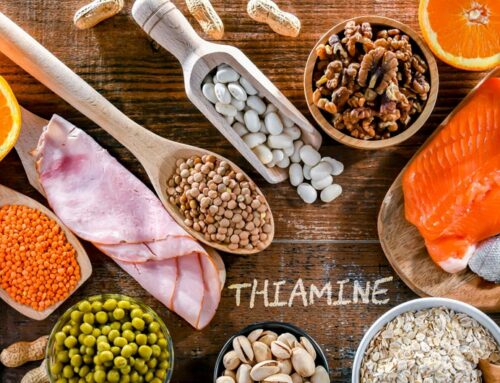Vitamin A is one of the fat soluble vitamins. We store this vitamin in the liver. Did you know there are two types of Vitamin A?
- Preformed vitamin A is found in animal products and dairy.
- Provitamin A is found in fruits and vegetables.
You may have heard of beta-carotene?… that’s a precursor to vitamin A. You can also obtain Vitamin A in its different forms through a supplement.
Vitamin A is known for helping to form and maintain healthy skin, teeth, mucus membranes and skeletal and soft tissue. It is also known as Retinol because it helps you produce the pigments we have in the retina of the eye. It helps to encourage good eyesight, especially in low light conditions. It also contributes to a healthy pregnancy and breastfeeding.
There are two forms of vitamin A found in food:
- Retinol: This is an active form of vitamin A. It is found in animal liver, whole milk and some fortified foods.
- Provitamin A carotenoids: Carotenoid is a fancy word for plant pigments. Once we eat them, our body then converts it to Vitamin A. There are more than 500 carotenoids. Beta-carotene is a carotenoid.
Beta-carotene is also an antioxidant. Antioxidants are free radical Fighters. Eating foods that contain antioxidants protects the cells from damage by free radicals.
Foods containing Vitamin A:
- Beef liver
- Some types of fish, such as salmon
- Eggs
- Dairy products
- Orange and yellow fruits and veg
- Broccoli, spinach, dark leafy greens
- The deeper the colour of a fruit or veg, the higher content of vitamin A
If you are deficient you may experience:
- Reversible night blindness
- Corneal damage
- Dry, scaly skin
If you get too much:
- High intake can cause birth defects in pregnant women. While you may not get sick from ingesting too much, it is possible your skin may tint yellow or orange.
Dietary reference intakes for vitamin A: (The Recommended Dietary Allowance (RDA) for vitamins is how much of each vitamin most people should get each day. The RDA for vitamins may be used as goals for each person.)
- Infants (AI)-adequate intake
- 0 to 6 months: 400 micrograms per day (mcg/day)
- 7 to 12 months: 500 mcg/day
- Children (RDA)
- 1 to 3 years: 300 mcg/day
- 4 to 8 years: 400 mcg/day
- 9 to 13 years: 600 mcg/day
- Adolescents and adults (RDA)
- Males age 14 and older: 900 mcg/day
- Females age 14 and older: 700 mcg/day (for females aged 19 to 50, 770 mcg/day during pregnancy and 1,300 mcg/day during breastfeeding)
The optimal way to get the daily requirement of important vitamins is to eat a wide variety of fruits, vegetables, fortified dairy foods, or fortified plant milks, legumes (dried beans), lentils, and whole grains.
Reference: https://www.mountsinai.org/health-library/nutrition/vitamin-a







Leave A Comment